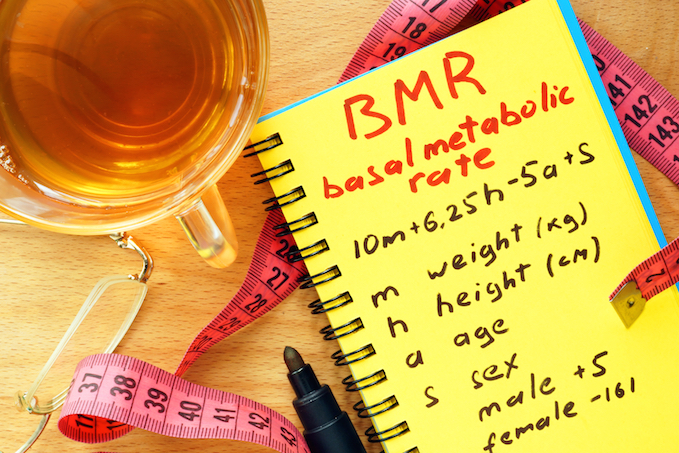How To Calculate Your BMR Quickly & Accurately

In the world of health and fitness, BMR is one of those acronyms that gets thrown around quite a bit.
It stands for Basal Metabolic Rate, and is the amount of energy that your body needs every single day to sustain its basic functions.
We’re talking about the amount of energy that’s required for breathing, to control your heart beating, and to keep the rest of your organs functioning properly.
Basically, everything that needs to happen to keep you alive!
What many people don’t realize, however, is just how many calories your BMR actually accounts for each day.
Well, it’s a whole lot, to say the least…
In fact, your BMR will typically make up the majority of calories that you burn each day – unless you are running marathons or laboring away intensively during your waking hours.
Also, as we’ve covered before, your BMR isn’t static.
It can vary considerably based on your weight, height, age, and body fat percentage – not to mention the impact of certain hormones, such as leptin.
In this article, I’m going to show you the easiest, most accurate way to calculate your BMR, which will help provide the basis for how many calories you should be eating each day – regardless of whether you’re trying to lose weight or bulk up.
How To Calculate Your BMR
Now here’s the kicker…
There are actually several different ways to determine your BMR, and all of these methods will produce different results.
For a long time, the most popular method for determining BMR was the Harris-Benedict formula.
This formula is based on your body weight, age, height, and sex.
However, in recent years, the Mifflin-St Jeor formula has been thought to be more accurate, and has subsequently become the formula that most website calculators are based around these days.
Still, from our experience training 100s of people, we’ve found that both of these formulas are missing a key component:
They don’t properly take differing body fat percentages into account.
Even for people that are exactly the same weight, the amount of body fat that they’re holding can make a fairly significant difference to their BMR.
For example, a person who weighs 190 pounds at 30% body fat will have a drastically different BMR to a person who weighs 190 pounds at 8% body fat.
This is because BMR depends quite a bit on lean body mass, as we discuss in this article.
And while the age, height and sex variables used in the Mifflin-St Jeor formula try to account for this, it still often falls short.
For this reason, we strongly recommend using the Katch-McArdle formula to calculate your BMR.
This formula takes body fat into account properly, and is therefore the most accurate when used correctly.
Using The Katch-McArdle BMR Calculator
Using the Katch-McArdle BMR calculator is fairly straightforward.
Just enter your current body weight in the field below, select lbs or kg, and then put in an estimate of your body fat percentage.
If you’re not sure what your current body fat percentage is, check out this article to get a sense of where you are.
That it – the result should be a pretty accurate estimate of your current BMR.
We should note that even if you don’t know your exact body fat percentage, you should NOT leave the field blank.
This will return an inaccurate reading, since the calculator will consider that as a body fat of zero, so just use your best estimate.
You can then use your BMR, in addition to your daily activity levels, to help determine your Total Daily Energy Expenditure (also known as your TDEE).
And remember, as both your body weight and your body fat percentage change over time, you should periodically recalculate your BMR here, so as to ensure that you are eating the appropriate number of calories each day.